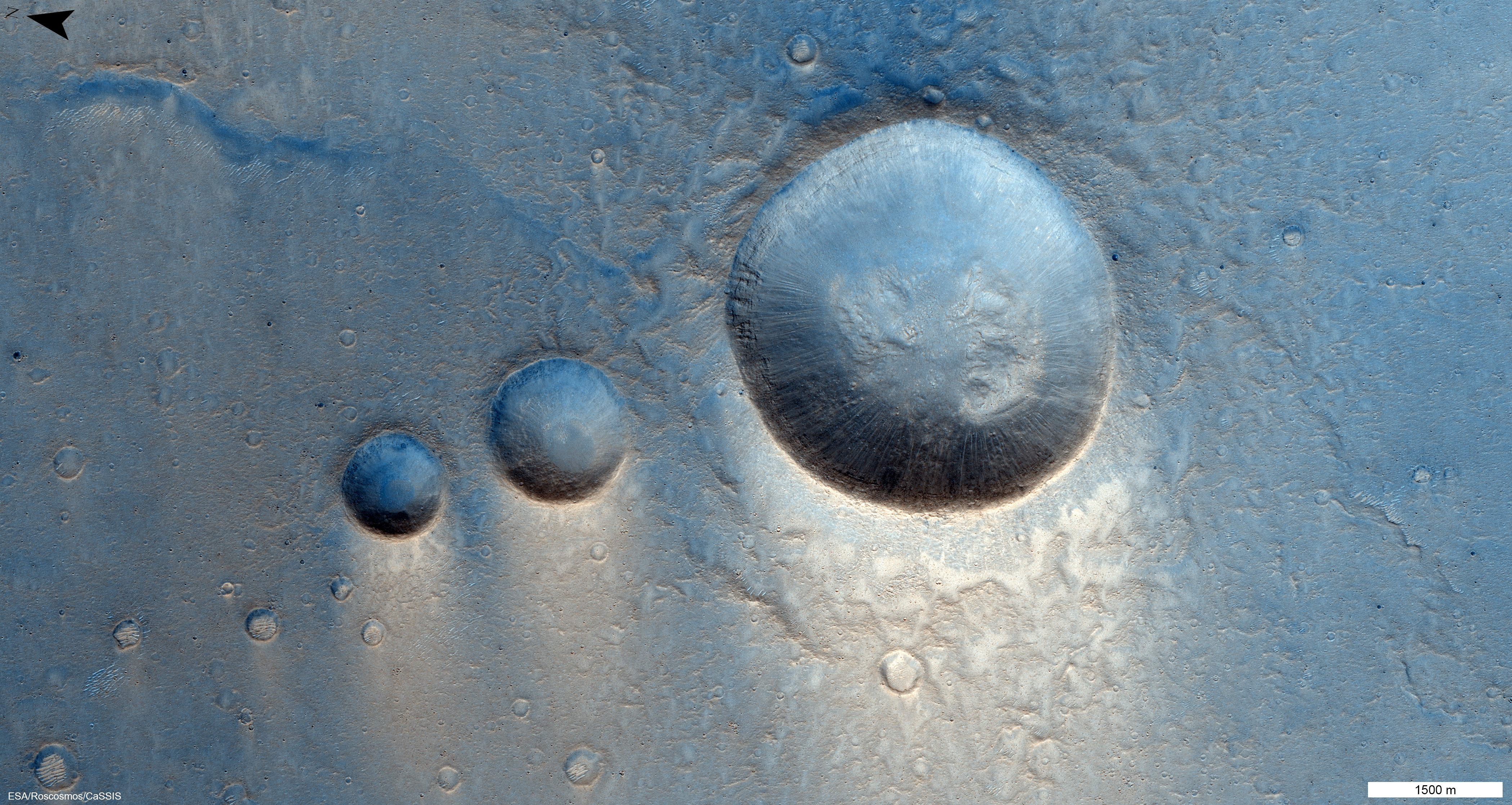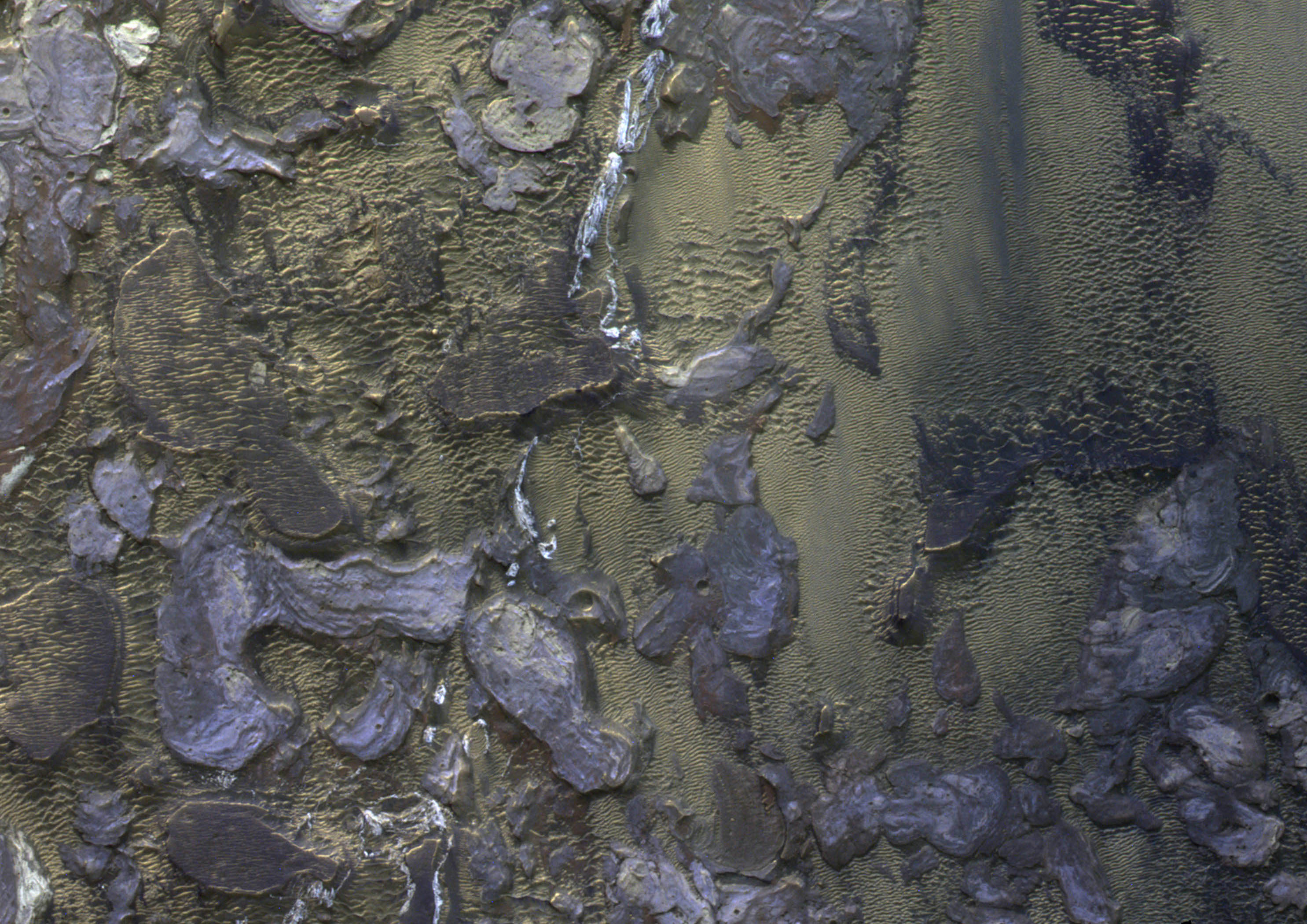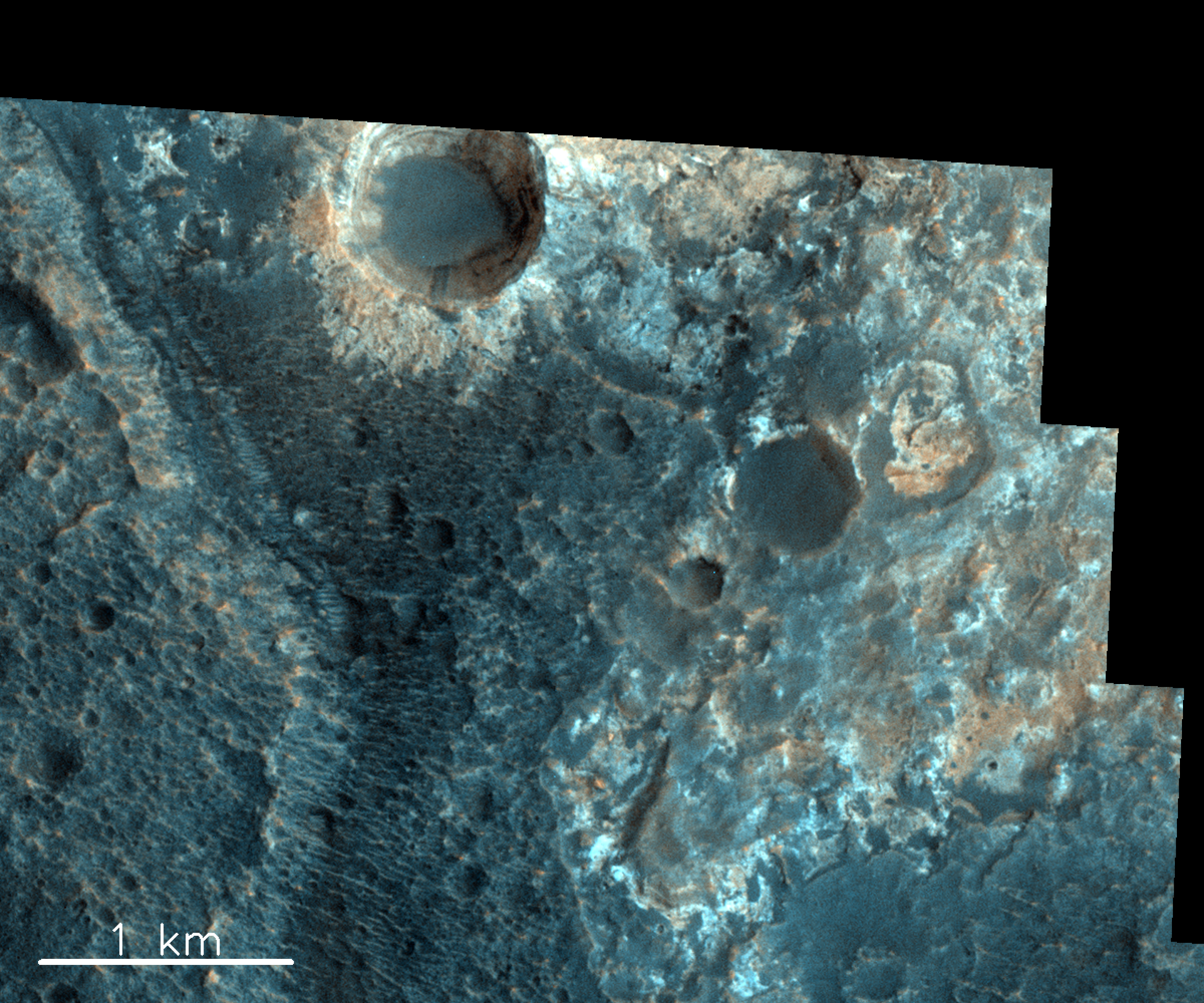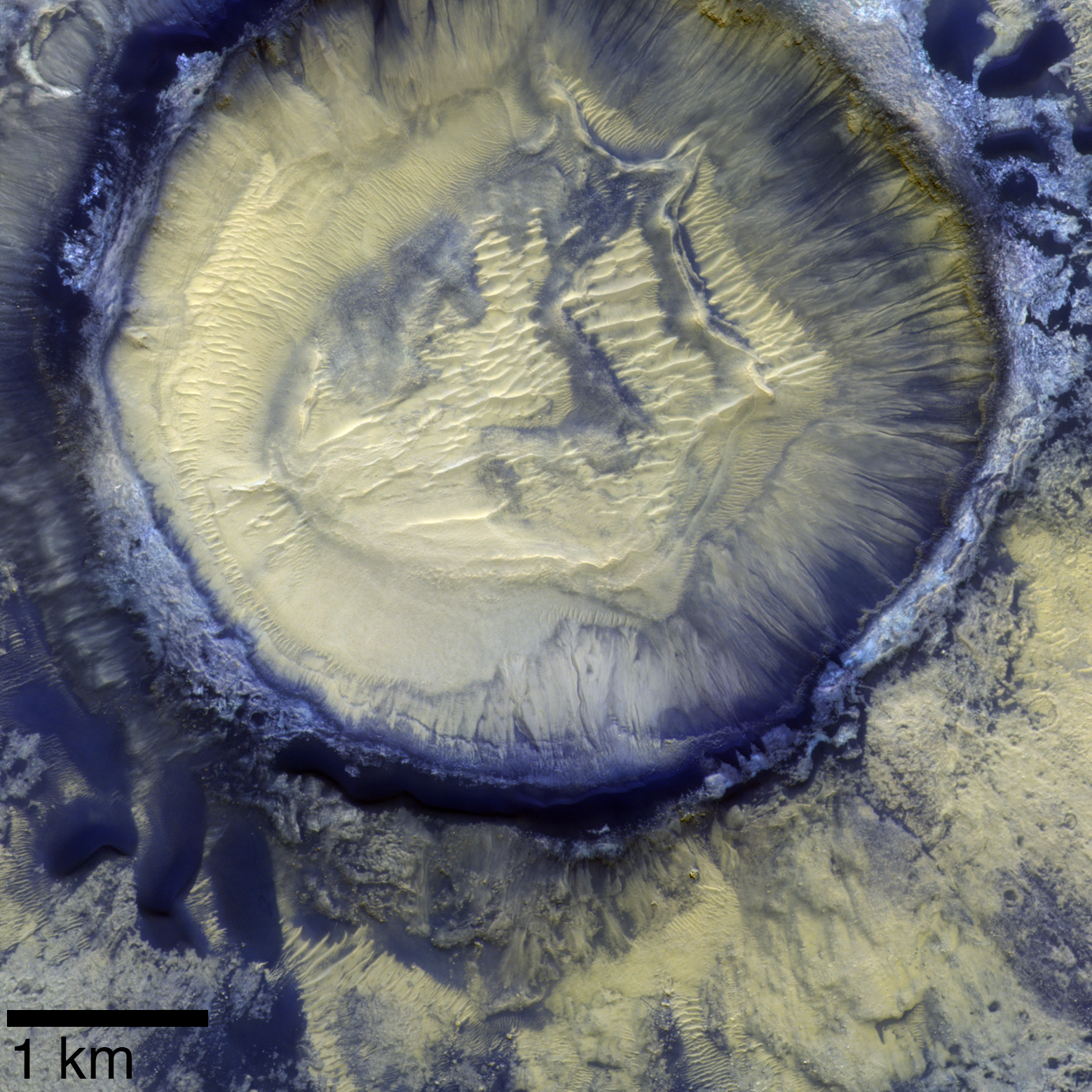CaSSIS, a Swiss-made Mars camera
A Swiss-made device has been orbiting and photographing Mars since 2018. It has obtained over 30,000 images to date. Developed by a team at the University of Bern, the CaSSIS camera system has sent spectacular images of Mars that have created a global sensation.
CaSSIS, a small marvel of Swiss technology, has been continuously orbiting Mars since 2018. Weighing in at 5.5 kilogrammes, the device is collecting valuable scientific knowledge 76 million kilometres from its birthplace at the University of Bern.

Technological jewel
CaSSIS, short for colour and stereo surface imaging system, was designed by a team of researchers led by Nicolas Thomas, director of the Institute of Applied Physics at the University of Bern. The instrument was launched in March 2016 on board the ExoMars Trace Gas Orbiter (EMTGO) and has been operating continuously since it was activated on 21 April 2018 after a two-year journey through space.

Image taken on 22 March 2021
© ESA/TGO/CaSSIS CC BY-SA 3.0 IGO
Space probes orbiting Mars can provide images with a resolution at least 1,000 times higher than terrestrial or Earth-orbiting telescopes can obtain. The camera's stereo capability also allows us to map the topography of Mars' surface. We get 3D images
Nicolas Thomas, director of the Institute of Applied Physics at the University of Bern
In March 2019, CaSSIS transmitted its first image of InSight, NASA's Mars lander. The images that followed in September 2019 provided evidence of gas eruptions in dune fields, climate change and dry avalanches on Mars. The images obtained by CaSSIS are a testament to the extraordinary scientific capabilities of the Bern-made camera system.

Image taken on 19 October 2020
© ESA/TGO/CaSSIS CC BY-SA 3.0 IGO
CaSSIS also helps find landing sites
The CaSSIS team has also set its sights on active geyser structures in the southern hemisphere of Mars. "Some of these geysers can reach a height of 140 metres – as high as the Jet d'Eau in Geneva. But the jets are gas driven, which makes them very difficult to make out against the Martian landscape," explains Thomas.
The images captured by CaSSIS of the Oyama Crater are particularly striking: "In a way, the distinct layers exposed in the walls of the small crater give us a window back in time," notes Thomas.
Areas such as these are of particular interest for future Mars exploration, as signs of water point to possible traces of life in the past. "The CaSSIS images thus also help us to identify areas that could be suitable landing sites and are of interest for future exploration of our neighbouring planet," adds Thomas.

Image taken on 13 June 2019
© ESA/TGO/CaSSIS CC BY-SA 3.0 IGO
Mars from every angle
The scientists at the University of Bern receive about 20 images of the Martian surface each day. They have collected over 30,000 images to date. These images, of which 60-70% are relevant to science, cover 3% of the Red Planet's surface. CaSSIS was also designed to take 3D images: a sophisticated rotation mechanism allows its camera to swivel and photograph the same spot from two different angles. This operation is relatively energy-intensive and is used sparingly to save battery life.

Image taken on 25 May 2019
© ESA/TGO/CaSSIS CC BY-SA 3.0 IGO
CaSSIS surveys Mars from every angle – from ancient landscapes shaped by erosion, craters and volcanoes of all sizes, to dry lakes and enormous sand dunes, ice sheets, dust tornadoes and avalanches. But the images it takes do not show the Red Planet in its true colours. Back on Earth, the raw images are processed and enhanced to highlight the wide range of features found on Mars' surface. This technique, based on scientific analysis protocols, accentuates colours and shades to reveal the different types of minerals and highlight the wide spectral variability of the planet's surface. This enables geologists back on Earth to study the mineralogical and lithological properties of the Martian crust. Although these images were produced in the interest of science, their otherworldly, abstract quality also makes them works of striking beauty.

© ESA/TGO/CaSSIS CC BY-SA 3.0 IGO
More images taken by CaSSIS can be seen on the European Space Agency website.
This article was originally published in the magazine L'Illustré (Bertrand Cottet, April 2022) and revised in March 2023 in consultation with the University of Bern.




